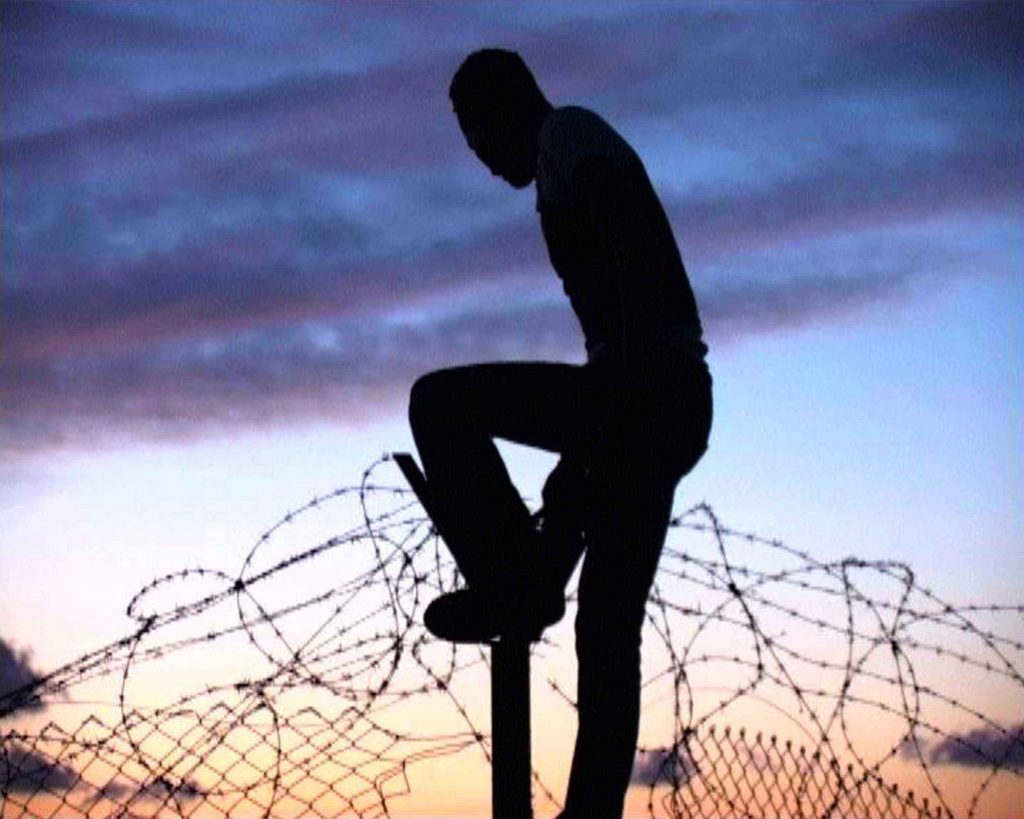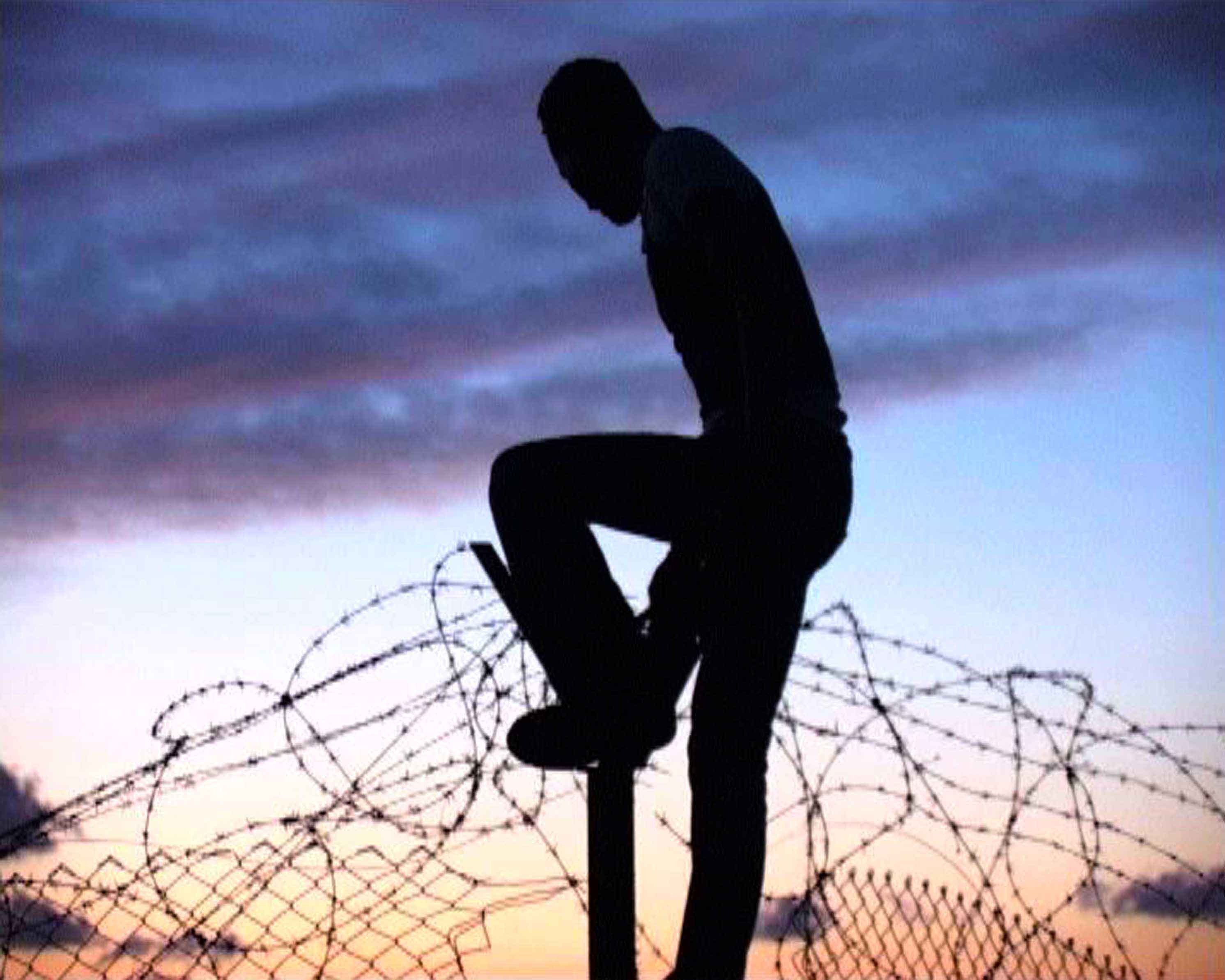
when critics argue against violent resistance. While there was a trend in recent years towards accepting that violence is sometimes the only option, the Arab Spring has vaulted nonviolence back into the global zeitgeist, despite Libya having paid for their freedom—and it wasn’t cheap—in blood.
Nonviolent resistance has rarely been a significant force in the Israeli-Palestinian conflict, where reciprocal vengeance has long since made both sides blind. In an Israeli-Palestinian-focused two-film week at Cinema Politica, it’s clear just how much reason those living in the Gaza Strip and the West Bank have for violence against Israel, but also how effective nonviolence has the potential to be.
Tears of Gaza: ashen hair and mangled limbs
This Norwegian-produced film focuses on three children living in Gaza during Israel’s 2008 offensive in the region. The so-called “Gaza War,” a misleading moniker that supposes what occurred before or after the month-long operation wasn’t war, has been condemned by the United Nations for war crimes on both sides. The UN’s Goldstone Report accuses Israel of a policy that targets civilians, a charge its author later distances himself from but which is not evidently refuted, according to his cosignatories.
What’s clear in the first scene of the movie is these are children in body only. When asked their dreams for the future, two tell the camera they want to be a doctor and a lawyer—to treat those hurt by the Israelis and prosecute the Israelis for doing so, respectively. The third is much more profound. Looking solemnly at the ground, with a weary stance, she says quietly, “Life is really hard. Really.”
There are happy moments in these kids’ lives, and we’re privy to them early in the film.
But it’s not long before this bubble is burst. A siren, like that of an accelerated police cruiser’s, rings out in a bustling market. Moments later, the scene is brutally truncated by the arrival of death after blares of the sound of a fighter jet. Two-tone smoke engulfs the sky; some run away from the smoke, others towards it.
Apartment walls are strewn across the wide streets. Hundreds of men hurriedly move debris as children are lifted from the ruin. The crowd moans in unison as a broken man might after hours of torture. The next day a woman in black moves among the wreckage, reciting prayers; a young boy follows, walking with a cane.
The footage of Israeli attacks is phenomenal. What’s most affecting is not the explosions, but the few moments of missiles discharging from jets and helicopters. This elucidates the ease of inflicting utter destruction and the impossibility of preparing it.
In Tears of Gaza, the camera operates as witness and scribe. Little else is shown but life in the Gaza Strip, where bullets wrack houses and children die soldiers’ deaths. Almost no treatment is given to Hamas, nor is the effect of Palestinian attacks on Israel discussed. The conditions of life in Gaza are clear, and it’s hard to imagine a concerted effort towards peaceful resistance under them. But, as the next film shows, this is exactly what has been done elsewhere in Palestine.
Budrus: rallying ‘round the olive trees
Budrus is a small town near Ramallah, right at the edge of the West Bank’s border with Israel. When the Israeli government decides to build its own Great Wall, the Israeli West Bank barrier, to encircle areas of Palestine from which they argue suicide bombers were originating, Budrus stands to lose its farmland. Fifty olive trees to which the town had been tending for centuries are to be uprooted and disposed of in the construction. These trees provide the locus for resistance from the town of 1,900 people.
The resistance in Budrus follows the same blueprint used in Egypt, though on a much smaller scale and with concerted leadership. What we see is a war of attrition between the Israeli Defense Force and the protesters: sporadic beatings aside, the IDF is handcuffed by the presence of foreign nationals, Israeli citizens and women in the front line.
Laced with scenes of resistance are those with the movement’s leader, Ayed Morrar, whose nonviolent citizens’ coalition also aims to include both Hamas and Fatah. His family life is peaceful and forgettable; both qualities make easy to identify with while highlighting his improbability as a resistance leader.
Two IDF officials also make appearances in Budrus, lending it an evenhanded feel that Tears of Gaza lacks, though the latter’s observational tone makes the one-sidedness less worrisome. One soldier, Doron Spielman, is a spokesman for the army. His perfect English, with its touch of New York inflection, and spewing of officialese are expected. But it’s Yasmine Levy, an IDF squad commander, who lends the Israeli side a conscience. She develops an intriguing relationship with the women in the resistance. Her recollection of the events is best summed up as follows: “As combatants, we didn’t know all the implications and problems. We were like robots. They told us ‘Move the people.’ So we did.”
It’s a good example of the issues with demonizing specific soldiers, in the IDF or any army, for their indoctrinated obedience. The obedience itself, however, is terrifying.
While the olive trees are lost, the resistance is a success, and Israel’s reaction to it is hopeful in its cooperative tone.
But the question remains whether anyone could have the strength for this type of resistance were they undergoing the trauma of Gaza. My guess is no.
Tears of Gaza is showing on March 5 at 7 p.m. in H-110. Budrus is showing on March 9 at 7 p.m. in H-110. For more information, check out www.cinemapolitica.org/concordia.




